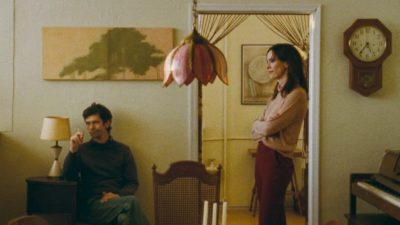Kristály (Crystal), a production by Recirquel, has been enchanting the audience in the winter period for five years already. Both children and adults love dwelling in its wonders. The show, which is set in a special space, will be played in a brand new venue this year: the Millenáris Glass Hall. It will be played almost 70 times, organised by the Müpa. We asked Bence Vági, artistic director of Recirquel and writer of the piece, about the play that involves audience completely by setting them into the performance space.

Bence Vági. (c) Bálint Hirling
I recalled Grimm’s and Andersen’s fairy tales when reading the description of the show. What inspired you in its creation?
I think it is closer to Andersen, but the Snow Queen topic is part of the folklore of several Northern countries. Kristály, the protagonist, is an ice queen who suffers from a broken heart and freezes the world around her, not wanting to let any emotion in anymore. This is what starts the storyline and we can see how it gets resolved in the end.

(c) Bálint Hirling
How did it go to create a fairy tale with contemporary circus methods?
When I started to work on it, I sat down with my usual notebook, put myself in the fairy tale and started to write dialogues. This time there are two actors involved, they are doing them. What makes Kristály the most interesting is that it is an immersive performance, the first in Hungary, which has been an old dream of mine. The audience doesn’t sit in a separate place but are completely inside, walking in snow, following the artist, watching them flying below them, and it makes them feel they are part of the magic.
How do they usually react?

(c) Bálint Hirling
Recirquel has a goal to work on more and more immersive productions. I think it is an important way of performance development. In the contemporary world, taking part in something has become the most natural experience. This theatrical approach, which Kristály is a part of, reflects on that. The audience can be totally lost in an immersive show. As if they were part of a film. This trend is developing everywhere around the world, and the performances are more and more spectacular. This made Kristály and our other new piece, IMA, to be born. Even in Hungary, people like these shows very much. IMA has been shown 100 times already with a full house, and Kristály will be shown almost 70 times just this winter.
Do you think the changing venue will bring something positive?

(c) Bálint Hirling
It will serve the production well. There has been a huge need for Kristály, and in the Millenáris, we have a big space with the possibility to welcome more people. We could also put in such elements that make the production even more enchanting.
How can the troop cope up with 70 performances? Isn’t it possible to burn out under such pressure?
On the contrary! After the covid period, it was a huge relief for our artists to be on stage so many times. They were very happy when they heard that there will be more shows this year than the years before. Otherwise, for a circus artist it is much better to be regularly on stage than doing 8-10 shows per year. Their bodies get used to the rhythm, the performance is like a constant physical training, so continuity is very good.
How did Renátó Illés become your co-director and artist-choreographer for this piece, and Gábor Zsíros a choreographer?
It is generally very important for us to involve the artists in the creative process. I wrote the script, then they supported it with ideas of how acrobatic and dance movements can enrich the story. They were present at every discussion and the creation of the music, so this show is the result of a lot of teamwork.

(c) Bálint Hirling
You involved hip-hop dancers, too. What made you choose this genre?
I thought that the scattered, “frozen” movements that some characters need to do in this show can be showcased the best through this genre. The hip-hop dancers became the frost army that protects the order in the Ice Queen’s realm, the Snow Land (editor’s note: the original name, Hólandia, resembles Hollandia, which is the Netherlands in Hungarian). Márk Csörögi was the choreographer who is a great dancer and hip-hop choreographer.
Brigitta Egyed and Juli Horányi play as actresses in Kristály, but you have worked with them before.
Brigitta Egyedi played the main role in our show The Naked Clown, and she also contributed to Paris At Night. Juli Horányi also played in the latter one, that’s how we got to know each other. They are great actresses who will do the prose parts which were inavitable for the storytelling, and also the songs they sing carry some important messages.
Why do you think this show can work for adults as well?
This is physical theatre with the highest quality acrobat artists, just like all of our shows, and full of the new circus experience. And I don’t know many adults who don’t want to feel like children sometimes. If a fairy tale is good and honest, it can bring out or truest inner child.
What do you plan for next year?

(c) Bálint Hirling
In the beginning of the year, parallel to Kristály, we will regularly play our shows My Land and Solus Amor.
Why should the audience go to the Kristály?
In the midst of the Christmas preparations, it is good to put a moment that makes festive experiences alive in us. This show is a great tool for that, as it lifts our spirits up, being a story of love most of all.
Article: Anna Rácz
Translation: Zsófia Hacsek

























Comments